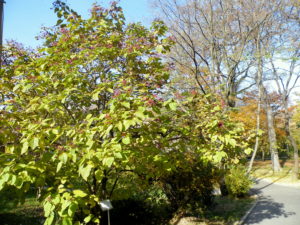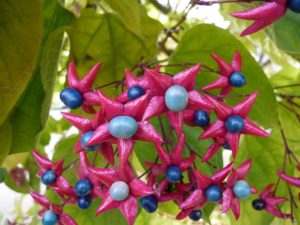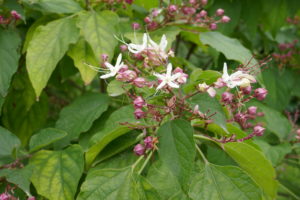Harlequin Glory-Bower
go.ncsu.edu/readext?555466
en Español / em Português
El inglés es el idioma de control de esta página. En la medida en que haya algún conflicto entre la traducción al inglés y la traducción, el inglés prevalece.
Al hacer clic en el enlace de traducción se activa un servicio de traducción gratuito para convertir la página al español. Al igual que con cualquier traducción por Internet, la conversión no es sensible al contexto y puede que no traduzca el texto en su significado original. NC State Extension no garantiza la exactitud del texto traducido. Por favor, tenga en cuenta que algunas aplicaciones y/o servicios pueden no funcionar como se espera cuando se traducen.
Português
Inglês é o idioma de controle desta página. Na medida que haja algum conflito entre o texto original em Inglês e a tradução, o Inglês prevalece.
Ao clicar no link de tradução, um serviço gratuito de tradução será ativado para converter a página para o Português. Como em qualquer tradução pela internet, a conversão não é sensivel ao contexto e pode não ocorrer a tradução para o significado orginal. O serviço de Extensão da Carolina do Norte (NC State Extension) não garante a exatidão do texto traduzido. Por favor, observe que algumas funções ou serviços podem não funcionar como esperado após a tradução.
English
English is the controlling language of this page. To the extent there is any conflict between the English text and the translation, English controls.
Clicking on the translation link activates a free translation service to convert the page to Spanish. As with any Internet translation, the conversion is not context-sensitive and may not translate the text to its original meaning. NC State Extension does not guarantee the accuracy of the translated text. Please note that some applications and/or services may not function as expected when translated.
Collapse ▲Judy Edwards brought a plant sample for identification. She said it was a small tree that bloomed white in the summer and now has beautiful red looking structures with round blue/black berries in the center.
She mentioned the tree attracts butterflies, among other insects, when blooming.
It had been several years since I’d seen a sample of this plant. It is called the harlequin glory-bower. The scientific name is Clerodendrum trichotomum. Many plants in the genus Clerodendrum are tropical plants. However, this species is hardy to zone 7, so it will grow in all of Caldwell County except the most northern areas with higher elevations and colder winters.
The harlequin glory-bower is a native of China and Japan. It has a non-formal open growth habit that can reach a height of up to 10 feet and have an equal spread. The plant can be trained to take on a tree shape with the diligent removal of suckers.
The fragrant blooms from the summer yield iridescent berries and have what looks like red flower petals at the base. These red petals are actually the calyx. The calyx is left over from the base of the flower. The calyx is formed from the sepals that protect the developing flower bud. Unlike most other plants, the calyx stays around and adds interest to the ripe fruit. Persimmons are similar to the harlequin glory-bower because the persimmon fruit also retains the calyx.
The red calyx persists as the fruit develops into small bright blue berries, making a very colorful combination. The leaves quietly drop in the autumn with no show of fall color and may still be green when they fall.
Some literature says the harlequin glory-bower prefers moist, well-drained soils. However, it seems to grow very well in heavy clay soil, too. There is a specimen of this plant growing at the NC State University JC Raulston Arboretum. They have found the plant grows best and flowers the most in full sun, but it can grow and flower in partial shade. Propagation is easy from seed or cuttings. Partially hardened wood cuttings can be taken in early summer and rooted in a high moisture chamber.

The harlequin glory-bower can have a nice overall appearance if kept pruned. (credit Marija Gajić wikimedia.org)
If you decide to put one of these plants in your landscape, then realize the plants like to sucker from its roots much like a sumac. A good way to prevent this is to plant it in a lawn area where any suckers are mowed off or plant it in a large planter.
For answers to your agricultural questions, call the N.C. Cooperative Extension, Caldwell County Center at 828-757-1290 or visit us online anytime.
N.C. Cooperative Extension is open to everyone. We strive to provide research-based and unbiased information.






